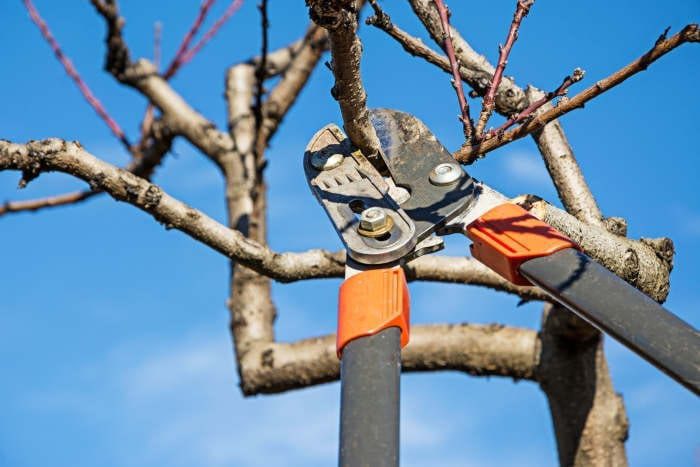The Simple Winter Pruning Action Plan for a Solid Garden this Spring

The right winter pruning will provide your garden with a vigorous, colorful awakening come springtime. Wanted to see how? Keep reading!
Why Prune in Winter?
- Health Boost: Get rid of dead, damaged, and crossing branches this winter to fool-proof against innumerable potential diseases and make way for the healthy growth of the new.
- Better Shape: With leaves gone, it’s easier to see the structure of your plants. Winter pruning helps you tidy up crossed branches and shape your plants for a balanced, attractive look.
- Vigorous Spring Growth: Winter Pruning encourages extensive plants and abundant flowers growth.
What to Prune Now
Trees: Discarded tree trunks and bush branches are an ideal home for hibernating insects and diseases.
Shrubs: Shrubs that bloom on new wood (like spirea and butterfly bush) love a winter haircut. Just wait on old-wood bloomers like lilacs until after they flower.
Roses: Trim roses down to knee height, shaping them like an open vase to boost airflow and reduce disease risk.
Winter Pruning Techniques
Most deciduous trees such as maples, oaks, and fruit trees, must be pruned in late winter before the spring growth season.
Winter pruning is done to enrich your tree’s natural pattern and improve its health and productivity.
Winter pruning methods:
- Use extremely sharp bypass pruners or saws to make clean cuts.
- Eliminate any branches that rub together, appear to be damaged, or stifle growth.
- Take care to slice just outside the branch collar without leaving any stump.
- Prune following the tree’s natural contours and aesthetic ratios.
- To avoid stressing the tree, never remove more than 25% of living branches.
- Prune spring flowering trees such as cherries and magnolias after blooming.
5 Quick Tips for Pruning Successfully
Keep these key tips in mind to give your trees, shrubs and roses a winter pruning that will benefit them as much as possible:
- Keep your tools clean between plants -Subduing the spread of disease goes a long way.
- Know your plants – Research how specific plant species react to being pruned before you cut.
- Make angled cuts – The cuts should not be straight down; angled cuts make it easier for water to drain away from cuts.
- Emphasize subtraction, not shearing – Do remove unwanted branches and stems but do not shear into shapes
- Remove suckers & water sprouts – Flushing new wood saps energy from the plant.
If you need help, you may hire a landscape or arborist professional to guide you in cold season pruning. Some attention now means all the difference when it comes to restoring your garden’s health and beauty for spring.
Let the Experts Handle It
Not sure where to begin with winter pruning?
R & S Landscaping – your professional Albuquerque landscaping company We can take over refreshing your landscape so you can relax – contact us to schedule expert pruning services today. Proper winter care will ensure a successful next growing season for your garden!
